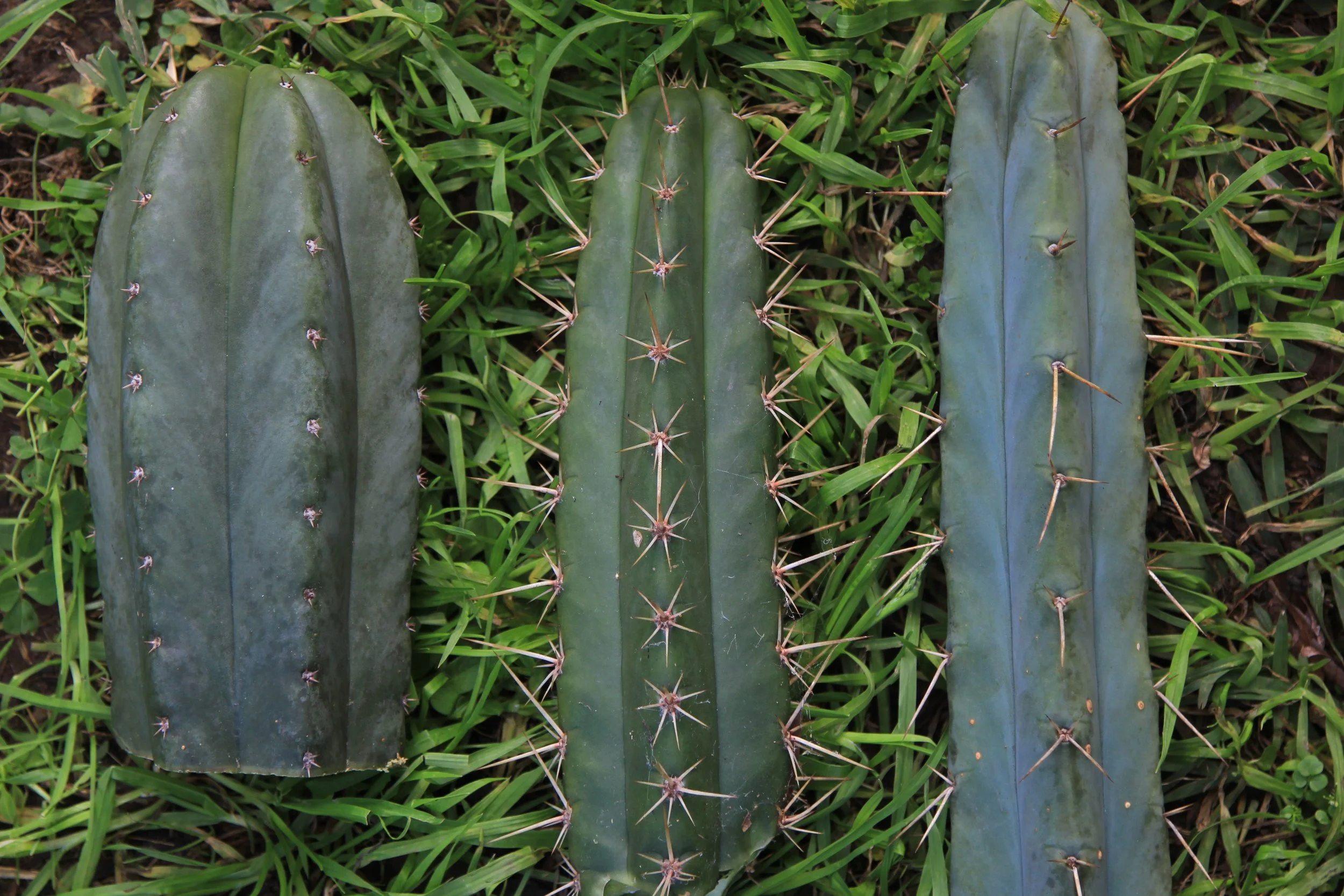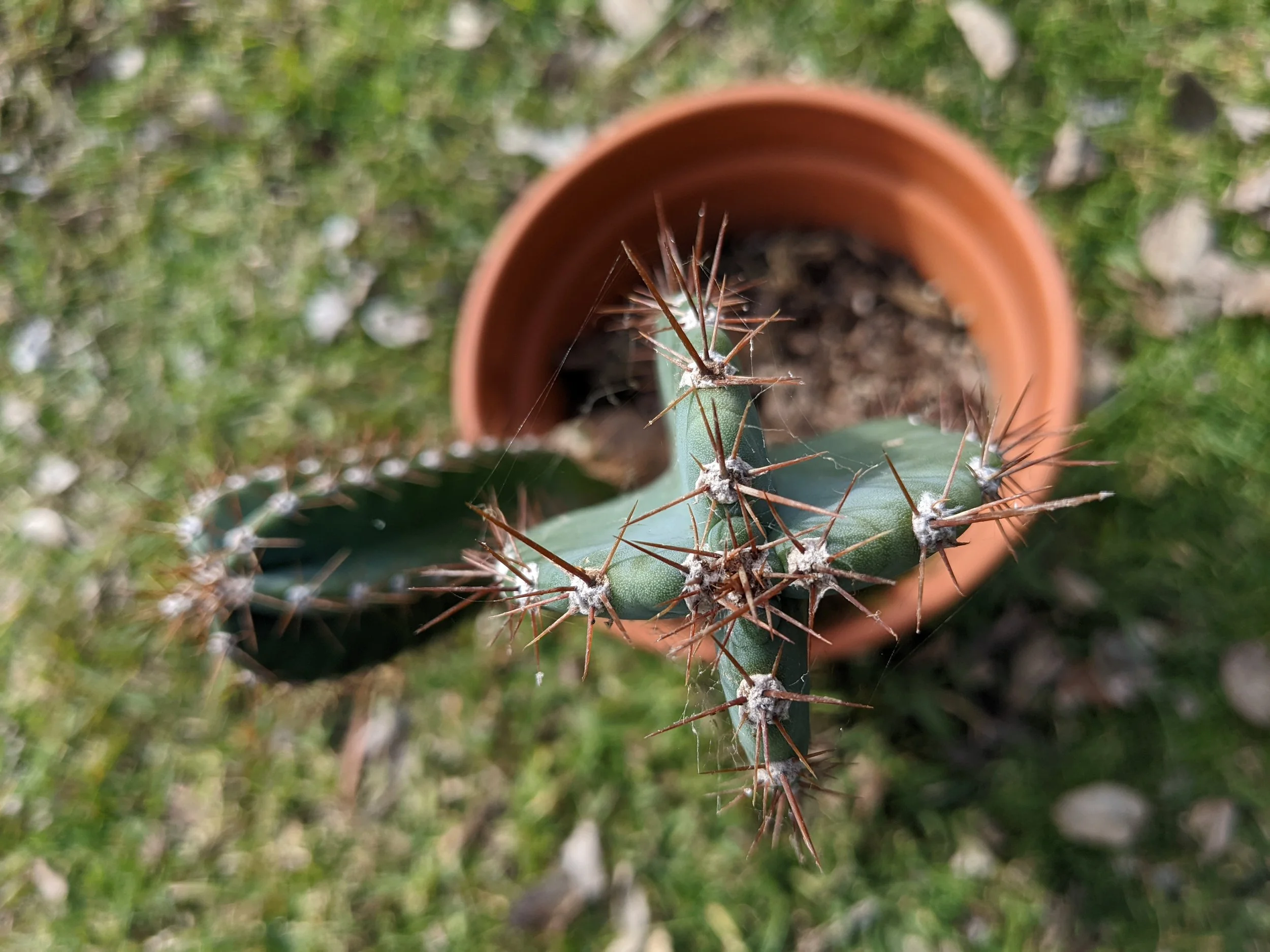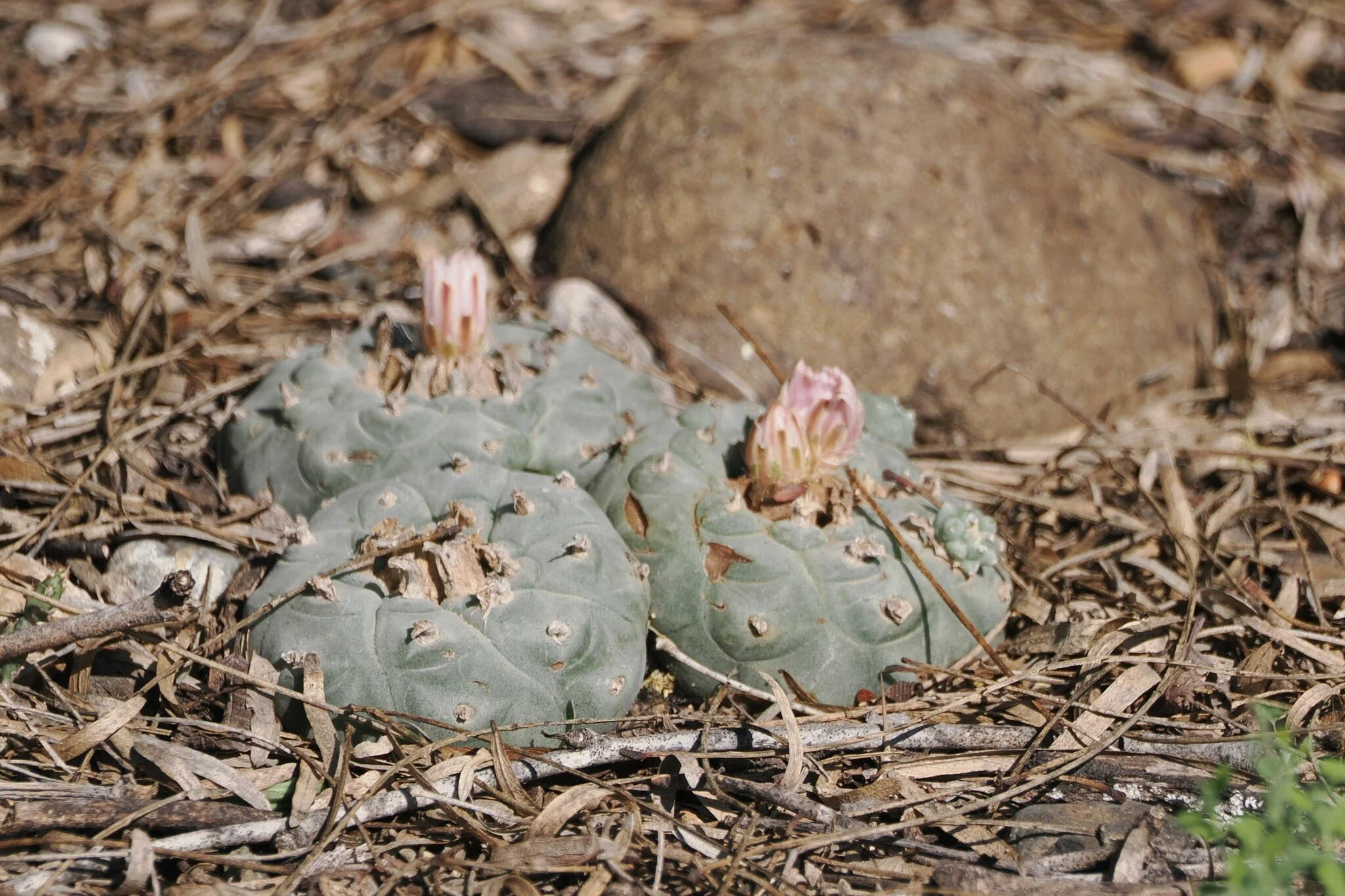Psychedelic Cacti: Consuming San Pedro, Peyote and Mescaline
Dr Liam Engel explains the psychedelic contained in San Pedro and Peyote cacti; mescaline, and summarises how to prepare and consume psychedelic cactus, as well as their relative potency.
“Psychedelic” 5HT2A receptor distribution in the human brain. Image by Psylo.
What are psychedelics, and what is mescaline?
Psychedelics are a group of drugs, including psilocybin, mescaline, DMT (the active psychedelic in ayahuasca) and LSD. Psychedelics work on the serotonin system, specifically the 5HT2A receptor. Psychedelic consumers may experience euphoria, empathy, stimulation, visuals, nausea, muscle tension, confusion and anxiety.
Psychedelics tend to amplify feelings in the present moment. If you’re feeling good, psychedelics will likely make you feel great! If you’re having a tough day, psychedelics could lead to a very challenging experience. This is why the set and setting of a psychedelic experience is so important.
Mescaline, the psychedelic found in San Pedro and Peyote cactus has effects that are longer lasting than psilocybin and DMT. In duration, mescaline is more like LSD (effects lasting ~8-14 hrs). Unlike LSD, mescaline is not particularly stimulating, but is more frequently associated with vomiting and feelings of nausea.
Can I buy psychedelics in Australia?
Australian law has had some recent changes, including the rescheduling of the psychedelic substances psilocybin and MDMA to allow their prescription as medicines. It is still illegal to buy magic mushrooms in Australia, but you can now have psilocybin (the active ingredient in magic mushrooms) medication prescribed by a licensed psychiatrist to be provided by a psychologist alongside psychotherapy for the treatment of depression. So, technically, you can now legally get psychedelic-assisted psychotherapy in Australia. While you can find magic mushrooms, including Psilocybe subaeruginosa, Psilocybe cubensis (AKA gold tops) and Panaelous cyanescens (AKA blue meanies) throughout Australia, psilocybin mushrooms remain illegal to pick or to cultivate.
You still can’t legally buy DMT in Australia or buy ayahuasca in Australia, but DMT Acacia are a part of our native bush landscape and play a vital role in our environment. Mescaline hasn’t been rescheduled as a medicine either, but it is legal to buy psychedelic cacti in Australia too; you might even spot San Pedro in your local botanical garden! Psychedelic Acacia and cacti are both legally cultivated in The Mescaline Garden.
Panaelous cyanescens (AKA blue meanies). Photo by Liam Engel.
Which cacti contain mescaline?
Mescaline has been found in a wide variety of cacti besides San Pedro; a group of Trichocereus species from the Andes mountain range, and Peyote; a single species, Lophophora williamsii, from the deserts of Mexico and the Southern United States. The other species listed in the image below contains mescaline only in trace amounts. I disagree with current claims of the discovery of mescaline in nature outside the cactus family.
We are yet to learn of other psychedelics appearing in cacti besides mescaline. Other psychoactive compounds in cacti include hordenine (a mild stimulant found in bodybuilding supplements Trichocereus, Lophophora and other species) and pellotine (a hypnotic found alongside mescaline in Lophophora williamsii, AKA Peyote).
Which San Pedro has the most mescaline?
The best way to know the identity of a cactus is by reading the label! We can practice how to identify San Pedro, but it’s impossible to say for sure without expensive genetic testing. This makes name tags and record keeping especially important.
If your San Pedro has a label, it will likely either be named as one of two genera, because people argue over the correct genera name. These genera are Trichocereus and Echinopsis. Remember; not all Trichocereus and Echinopsis species are San Pedro, although there are still many San Pedro species; as many as thirty or more – but this number is for the taxonomists to debate!
San Pedro species, from left to right; Trichocereus pachanoi, Trichocereus peruvianus, Trichocereus bridgesii. Photo by Liam Engel.
Common San Pedro (Trichocereus/Echinopsis) species names you may encounter include pachanoi, peruvianus, bridgesii, macrogonus and cuzcoensis. Research quantifying mescaline potency of San Pedro is very limited and is yet to support anecdotal claims that Trichocereus bridgesii contain the greatest amount of mescaline. Research has supported claims that largest amount of mescaline (~60%) is contained in the outer green layer (cholorenchyma) of San Pedro plants, and in reduced concentrations at their growing tip.
If research on which San Pedro species is the most psychedelic is lagging, then research on which San Pedro clone or cultivar contains the most mescaline is in the Dark Ages; more science is desperately needed! Potent Trichocereus bridgesii seem relatively similar in potency; with “Ben” and “TBM/Frauenglück”, for example, being two fairly potent, common bridgesii clones. The Trichocereus peruvianus 'Peruyote' clone has a reputation for being a very strong T. peruvianus, but potency seems comparable to a standard T. bridgesii. Even Trichocereus pachanoi “Predominant Cultivar” AKA “PC” contains enough mescaline for people to consume it for psychedelic effect, or so some reports say. While some might criticise PC as weak, it is just less potent relative to T. bridgesii and other more potent San Pedro. The same is the case for the Trichocereus scopulicola species.
The unlabelled plant most commonly misidentified as San Pedro is Cereus peruvianus AKA Peruvian apple cactus. Even the botanical name is similar; Trichocereus peruvianus is a San Pedro, but Cereus peruvianus is not. The easiest way to spot San Pedro from Cereus lookalikes is the width of their ribs. Imagine cutting a cacti column horizontally, at 90 degrees. The cactus cross section you have cut will appear in a star shape if the cactus was San Pedro, but if it was a Cereus peruvianus, the flesh will appear in the shape of an asterisk. Cereus peruvianus ribs are much thinner than the ribs of San Pedro. Flower tubes on Cereus will be hairless, while Trichocereus flower tubes will be hairy. The term tricho is actually another word for hair.
Cereus species. Note that Cereus have thinner ribs than San Pedro. Photo by Liam Engel.
How to prepare San Pedro for a psychedelic experience
In my research of San Pedro consumption, I have observed three common recipes:
Boil chopped cactus in water with lemon, remove plant and drink water;
Eat whole cactus fresh, and;
Completely dry the cactus, crush and eat as powder.
I have collected data around people using all three of these above recipes both with whole plants as well as just with the outer green layer of cactus, which is thought to have a higher concentration of mescaline content. Presumably, using just the green layer results in a more potent final product, but using just this layer is also likely to waste ~30% of the total mescaline content and additional plant material. In traditional settings, I understand variations of recipe 1. to be most common. These days, people often further refine the crude extract produced in recipe 1. by evaporating it to a tar, or by basifying the tea before re-extracting with another solvent.
It is perfectly legal to grow and to buy San Pedro cactus in Australia, but please note this information is for scientific purposes. To consume San Pedro in Australia is illegal and I do not want anyone to break the law. Understanding how to consume San Pedro is an important part of ethnobotanical history, the future of medicine, as well as the unique identities of each individual San Pedro plant. We should not break the law, but it is of scientific importance to discuss how to prepare San Pedro.
Increasing the potency of San Pedro
There are a number of techniques commonly employed to increase the potency of San Pedro. These techniques include;
Stressing cacti by drastically increasing or decreasing light
Selecting older growth
Avoiding growing tips
Selecting only the outer green layer of flesh
Dehydrating and/or extracting mescaline into water and/or refining to tar or crystal
Combining with fasting and meditation
Combining with other psychedelics, such as psilocybin mushrooms
Distribution of mescaline in San Pedro. Image by Lin et al.
How to consume Peyote
Traditionally Peyote is consumed fresh or dried as ‘buttons.’ Peyote grows much, much slower than San Pedro and is threatened in it’s native habitat.
San Pedro mescaline is more sustainable than Peyote mescaline. Besides people who are maintaining the traditions of their ancestors, I’m not sure why people consume Peyote – especially if they extract it! If you want to know how to prepare Peyote because you just want a mescaline experience, remember that San Pedro is a more sustainable, cheaper and more accessible source of mescaline. If you want to buy Peyote in Australia, you will quickly discover it is far cheaper to buy San Pedro.
Lophophora williamsii (AKA Peyote) in habitat. Photo by Steve B.









